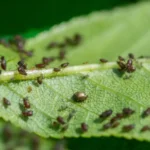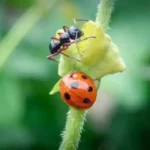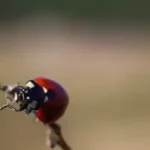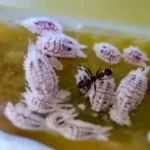Imagine tending to your garden, hoping for a thriving oasis of greenery and blooms. Suddenly, you notice some grasshoppers lurking around. They may be friends or foes, yet you ask yourself, “Are grasshoppers good for the garden?” If you’ve found yourself in this situation, wondering about the impact of these hopping insects on your green oasis, you’re not alone. Let me shed some light on the role of grasshoppers in your garden to help you make informed decisions about managing them.
Grasshoppers can be both beneficial and detrimental to a vegetable garden. On one hand, they play a role in the ecosystem as food for birds and other animals, and their droppings can contribute nutrients to the soil. However, they can also be destructive pests, feeding on various vegetable plants and causing significant damage if their populations are uncontrolled. Balancing their role as part of the ecosystem with the need to protect vegetable crops is vital to managing grasshoppers in the garden.
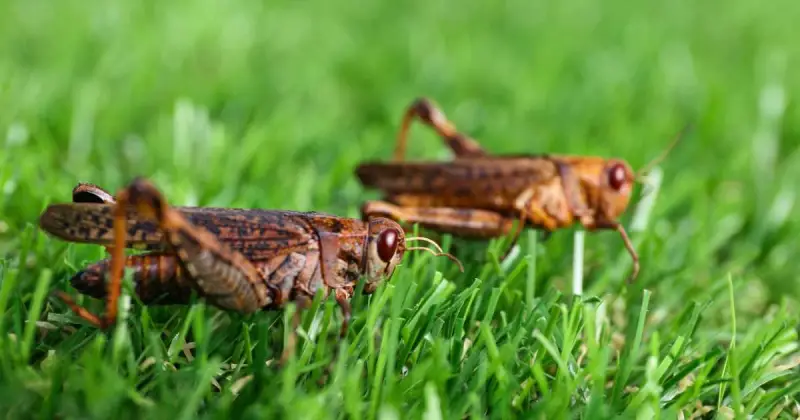
Did you know that a single grasshopper can eat up to half its body weight in plants daily? Still, although these hungry insects enjoy eating what you grow, managing their population is essential for a thriving garden ecosystem.
Are you curious how grasshoppers can benefit or harm your garden? In the upcoming sections, we’ll explore the intricate relationship between these creatures and your garden’s delicate ecosystem. From their feeding habits to the potential damage they can cause, we’ll delve into the nuances of coexisting with grasshoppers in your gardening space and explore plenty of natural ways to ward off these pesky critters. Stay tuned to discover how to balance and ensure a flourishing garden.
Humble Highlights
- Save time by discovering these 7 natural ways to keep hungry grasshoppers off your flourishing crops so you can maintain a vibrant garden, preserving healthy and abundant yields!
- Uncover how grasshopper feeding habits impact your garden’s longevity so you can better manage their numbers, protect your green turf, and discover natural ways to combat their destruction.
- Save money by balancing the grasshopper presence in your garden with natural deterrents and strategic planning with herbs and common flowers so you can keep your crops safe throughout each season!
Grasshoppers As Garden Pests
Grasshoppers pose a significant threat to gardens as they heavily impact plant health due to their voracious feeding habits. These pests target a variety of common garden crops like lettuce, carrots, beans, and corn. Consuming up to 16 times their body weight in plants daily, grasshoppers can cause extensive damage to garden vegetation.
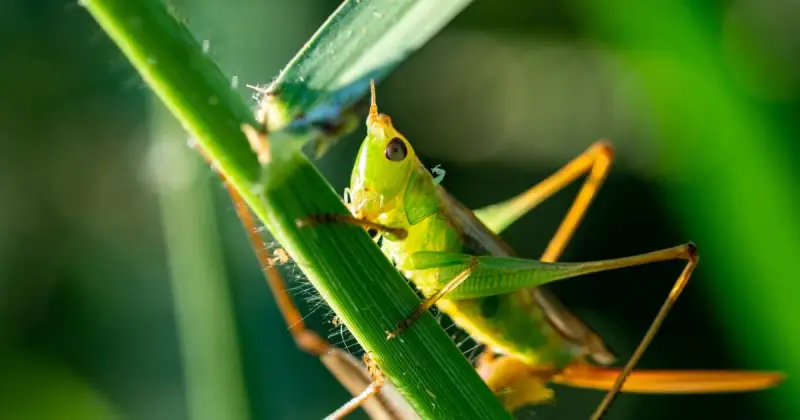
Several excellent options home growers can implement to fight back against these damaging insects include:
- Physical barriers: Use row covers or screens to protect plants from grasshoppers.
- Natural predators: Introduce predators like birds, parasitic wasps, or predatory beetles to control grasshopper populations.
- Habitat management: Remove tall grass, weeds, and other vegetation that serve as breeding grounds for grasshoppers. 1
- Crop rotation: Rotate crops throughout your garden from season to season to disrupt grasshopper life cycles and reduce their numbers.
- Beneficial insects: Introduce insects like nematodes or fungi that target grasshopper eggs or nymphs.
- Organic pesticides: Use organic pesticides like Neem oil or insecticidal soap to control grasshoppers, and follow instructions carefully to avoid harming beneficial insects.
- Chemical pesticides: Chemical pesticides can be used as a last resort, but they should be used sparingly and according to label instructions to minimize environmental impact.
Implementing effective pest management strategies that specifically target grasshopper populations is essential to safeguarding garden plants from destruction. By controlling these pests, gardeners can minimize the harm caused by their feeding habits and protect the health and productivity of their crops.
Young plants are particularly vulnerable to grasshopper damage, as the pests’ feeding activities easily compromise their delicate structures. The consumption of plant tissues not only affects the garden’s visual appeal but also stunts the plants’ growth and overall health.
Benefits Of Grasshoppers In Ecosystem
Although destructive, grasshoppers are crucial in the garden ecosystem’s recycling of nutrients and maintaining balance. Their consumption of plant material aids in decomposition, breaking it down for nutrient recycling.
Their nitrogen-rich waste acts as organic fertilizer, enriching the soil and promoting plant growth. Grasshoppers also serve as a food source for predators, contributing to ecosystem balance. 2
Grasshoppers also play a surprising role as they meander across your garden. As they move, these critters can help aerate the ground, which improves soil structure and drainage and benefits plant roots.
Grasshoppers can be a significant nuisance in home gardens and farms, devouring plants and causing extensive damage. Fortunately, there are practical and sustainable methods for reclaiming your food turf! The video below shares plenty of effective options for protecting your plants and reducing the impact of grasshoppers on your crops.
Grasshoppers’ Impact On Plant Health
When considering the impact of grasshoppers on plant health in a garden ecosystem, their relentless feeding behavior presents a significant challenge to maintaining the vitality of garden plants. Grasshoppers are notorious for their harmful effects on plant foliage, leading to defoliation and damage, especially in young and delicate plants.

Here are three crucial aspects to consider:
- Feeding Habits: Grasshoppers voraciously consume plant foliage, including leaves and stems, weakening the plant and impeding its growth.
- Defoliation Consequences: The damage inflicted by grasshoppers can result in defoliation, which causes plants to lose their leaves, diminishes their ability to photosynthesize, and ultimately affects their overall health and productivity.
- Economic Ramifications: Large grasshopper populations in commercial agricultural settings can bring about significant financial losses due to crop destruction, underscoring the importance of implementing effective control measures to safeguard plant health and prevent damage. 3
Remember, understanding grasshoppers’ impact on plant health is vital for implementing strategies to mitigate their adverse effects and preserve the well-being of your garden’s vegetation.
Natural Ways To Control Grasshopper Population
Natural control methods are crucial for effectively managing the grasshopper population in your garden, as they promote plant health and reduce damage.
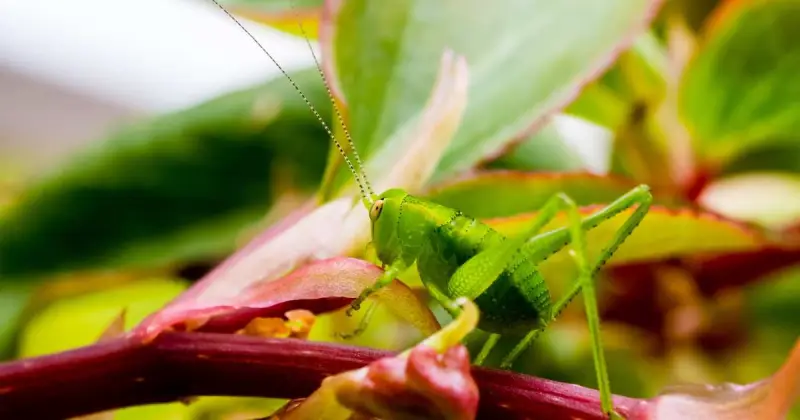
One popular method is to attract beneficial insects by planting flowers like marigolds, calendula, and sunflowers around your garden. These unique flowers attract insects that prey on grasshoppers, naturally decreasing their numbers. A bird-friendly environment, as birds feed on grasshoppers, can also help control grasshopper populations.
Another natural approach to decreasing grasshopper numbers is using Nosema locustae, a disease-specific to grasshoppers, to reduce their numbers. 4
By incorporating these natural techniques, you can maintain a balanced ecosystem in your garden and minimize grasshopper damage.
Additionally, garlic-based repellents offer a chemical-free way to deter grasshoppers from feeding on garden plants, since insecticides may not fully control grasshopper populations and can also harm the beneficial insects you’re looking to attract.
Balancing Grasshopper Presence In Garden
Maintaining a balance of grasshopper presence in your garden is crucial for plant health and ecosystem stability. When managing grasshopper populations in the United States, consider the following three strategies:
- Natural Deterrents: Plant repellent herbs like cilantro around your garden beds or use barriers such as row covers to deter grasshoppers without applying harsh chemicals. 5
- Attract Predators: Invite birds, frogs, and beneficial insects like ladybugs to your garden to help control grasshopper numbers.
- Strategic Planting: Companion planting is a gardening technique in which different plants are grown together to benefit each other in various ways. For example, common marigolds or calendula flowers repel grasshoppers and increase garden biodiversity.
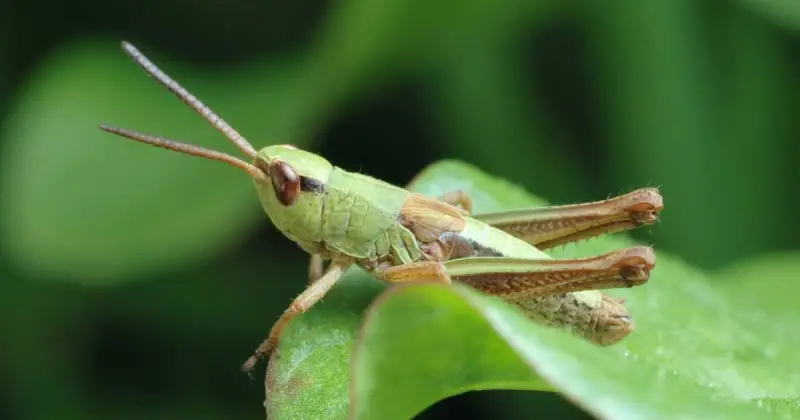
Conclusion
Interestingly, grasshoppers play a dual role in home gardens. On the one hand, they offer benefits through plant decomposition while posing a threat by consuming plant material. Therefore, finding a balance in their presence is crucial for maintaining plant health, care, and biodiversity.
Remember, with proper attention, you can create an environment where plants and grasshoppers can coexist harmoniously and still achieve full harvests of delicious fruits and vegetables.
What methods have you tried to successfully wrestle back garden supremacy from grasshoppers in your home garden? Spill your tried-and-true secrets in the comment section below!
SOURCES
- Wikipedia – Grasshopper
- ScienceDirect – Grasshoppers Affect Grassland Ecosystem Functioning: Spatial And Temporal Variation
- United States Department Of Agriculture, Research Service – Grasshopper Ecology And Preventative Management
- United States Environmental Protection Agency – Nosema locustae (117001) Fact Sheet
- National Library Of Medicine, National Center For Biotechnology Information – Control Of Pest Grasshoppers In North America

